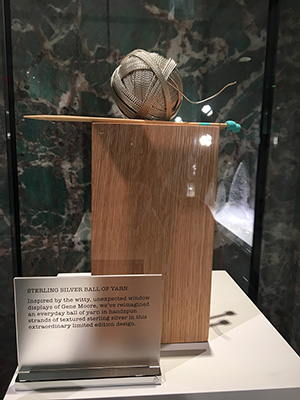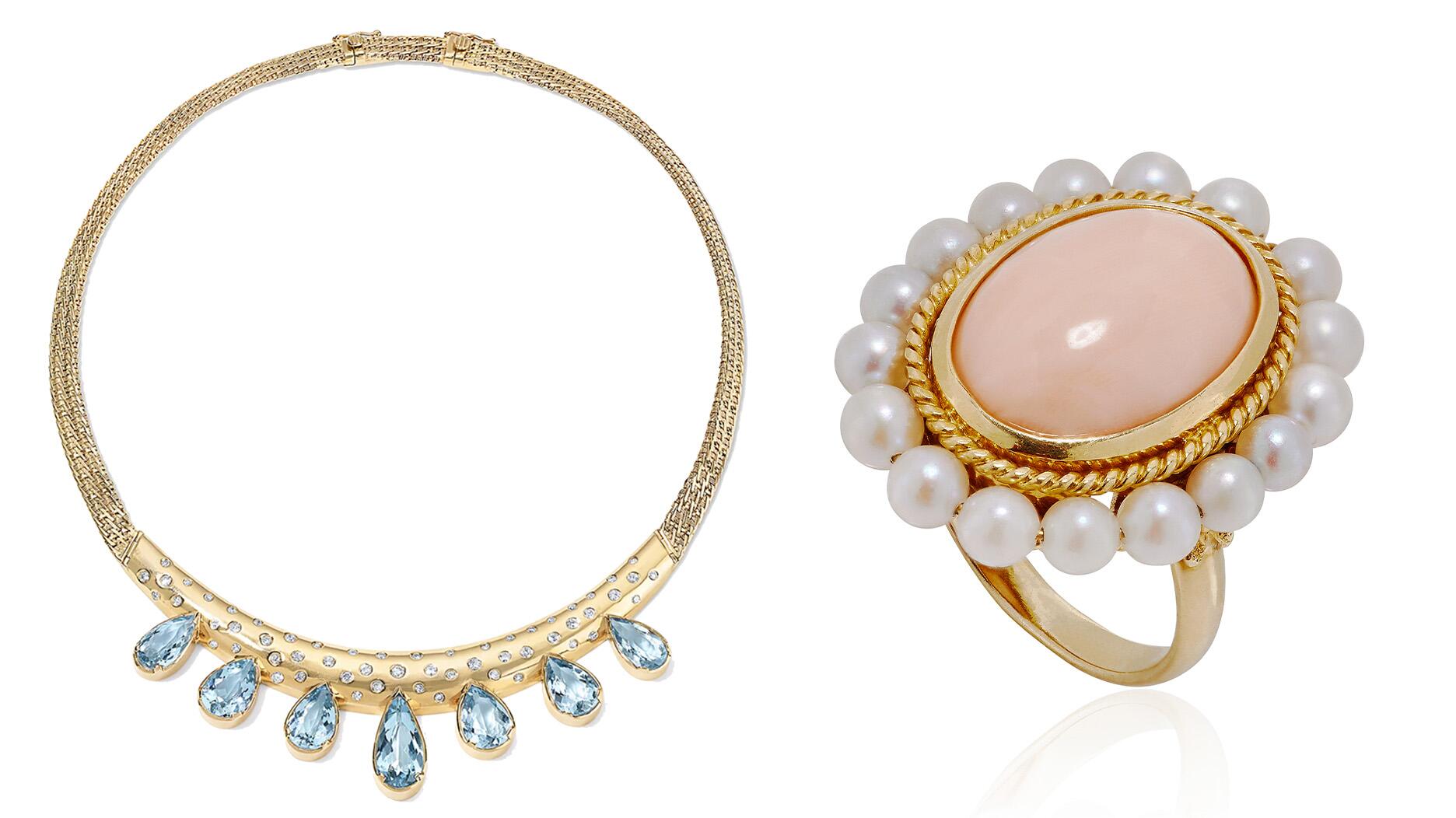The couple pleaded guilty to concealing at least $127 million in cash transactions at its precious metals businesses.
Breakfast at Tiffany’s Is Now a Real Thing
The retailer just debuted the redesigned fourth floor of its flagship store, which now includes an all-day café.

New York--Breakfast at Tiffany’s has evolved from being a popular ‘60s rom-com starring Audrey Hepburn to a real-life possibility.
On Wednesday night in New York, Tiffany & Co. fêted the reopening of its just-revamped fourth floor, which is home to accessories, tableware and, now, a café painted in the jeweler’s signature robin’s egg blue.
Jaye Thompson, who heads public relations globally for the retailer, said the redesigned floor was a collaboration between Richard Moore, Tiffany’s director of store design and visual merchandising, and new artistic director Reed Krakoff.
Tiffany named the accessories and fashion designer as its artistic director earlier this year--one in a series of executive moves, including a new CEO, the company made as it works to combat slumping sales.
Thompson said that Krakoff is weaving his style into everything Tiffany, from the stores to the websites to his first jewelry collection, which is set to debut next spring.
The retailer’s revamped fourth floor is lighter, brighter and more open, and it also includes less of something--merchandise.
Recognizing, like so many retailers, that stores today have to offer an experience, Tiffany cut back on its fourth-floor stock on display in order to dedicate space to the Blue Box Cafe and its on-site kitchen.
The café is open whenever the store is open and serves three meals a day as well as alcohol, which will be welcomed by anyone familiar with Fifth Avenue during the holiday season.
Also on the fourth floor, sprinkled in among the tableware, perfume and handbags, are a few of the items--in Tiffany terms, “Everyday Objects”--that have been lighting up the internet ahead of the grand reopening.
The $9,000 ball of yarn in sterling silver (pictured at left) had its own vitrine in the corner, and a sterling silver and enamel bandage box ($600) was among the objects under glass on the display table right off the elevator.
There was also the now-famous $1,000 “tin” can in sterling silver and vermeil, which Golf Digest described as an excellent alternative to “simply lighting the money on fire.”
So these “Everyday Objects”--the $9,000 ball of yarn, the $600 bandage box--were made by Tiffany simply to create a social buzz before the big opening, right?
In an answer that was neither a yes nor a no, Thompson said creating objects like these was “an expression of the quality we have here in
He added that earlier, he saw a woman buying the $55,000 watering can and, for the record, a National Jeweler editor saw a few party guests getting the “tin” cans engraved, so those apparently are of interest as well.
Thompson also pointed out that objects like the yarn, “tin” can and bandage box don’t comprise the bulk of the Everyday Objects collection.
Tiffany’s new Home & Accessories floor, including the Blue Box Cafe, is located on the fourth floor of its New York flagship, 727 Fifth Ave., at 57th Street.
The café is open during store hours, 10 a.m. to 7 p.m. Reservations are not required.
It officially opens to the public Friday.
The Latest

Consumers shared concerns about prices, inflation, tariffs, trade, and politics in the survey’s write-in response section.

In February 2026, the auction house will move its headquarters to the former Steinway Hall, a neoclassical landmark on Billionaires’ Row.

How Jewelers of America’s 20 Under 40 are leading to ensure a brighter future for the jewelry industry.

The new show will take place Jan. 23-25, 2026.


The former BHP Billiton leader and Gemfields chairman is remembered for his influential leadership throughout his 50-year mining career.

The LVMH-owned brand has partnered with the costume design union to revamp its award for 2026.

Roseco’s 704-page catalog showcases new lab-grown diamonds, findings, tools & more—available in print or interactive digital editions.

In the recent multi-shipment seizure, CBP also found counterfeit Audemars Piguet, Moncler, and Chrome Hearts items.

Helzberg’s Chief Retail Officer Mitch Maggart shared details about its tests of a new store concept rooted in an elevated luxury experience.

Jewelers of America execs and National Jeweler editors discuss tariffs, the sky-high gold price, and the engagement that broke the internet.

The luxury goods company said founder Ippolita Rostagno will remain at the brand’s helm.

Laura Burdese, who joined the Italian luxury brand in 2022, will take on the role in July.

The National Jeweler editors revisit the most noteworthy industry happenings and design trends from 2025.

Need a gift for the cat lover who has everything? Look no further than our latest Piece of the Week.

It purchased the “Grosse Pièce,” an ultra-complicated Audemars Piguet pocket watch from the ‘20s, for a record-breaking price at Sotheby’s.

The lab-grown diamond grower now offers custom engagement and fashion jewelry through its Kira Custom Lab Jewelry service.

Chandler got his start at Michelson Jewelers and has served as DCA president and CEO since 2001. He will retire at the end of the month.

The boutique is slated to open this week inside Terminal 8, offering pre-owned Rolex watches and more to international travelers.

Sponsored by Digital Monitoring Products

The special-edition egg pendant ingested in a New Zealand jewelry store was recovered after a six-day wait.

Associate Editor Natalie Francisco plays favorites with Piece of the Week, selecting a standout piece of jewelry from each month of 2025.

The “Love and Desire” campaign is inspired by the magic that follows when one’s heart leads the way, said the brand.

Two awardees will receive free tuition for an educational course at the Swiss lab, with flights and lodging included.

Berta de Pablos-Barbier will replace Alexander Lacik at the start of January, two months earlier than expected.

Sotheby’s held its first two jewelry sales at the Breuer building last week, and they totaled nearly $44 million.

Winners will receive free registration and lodging for its fourth annual event in Detroit.



























